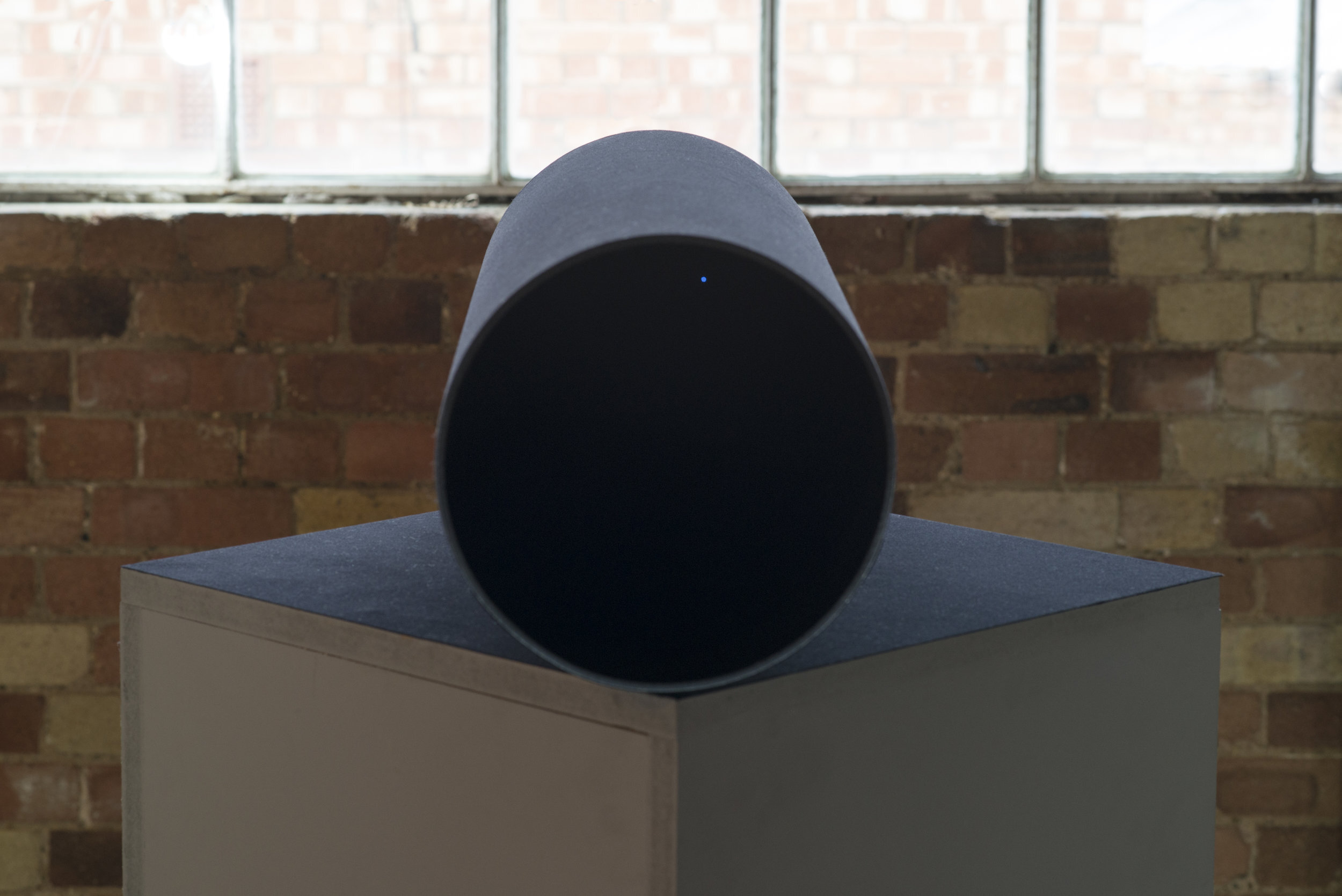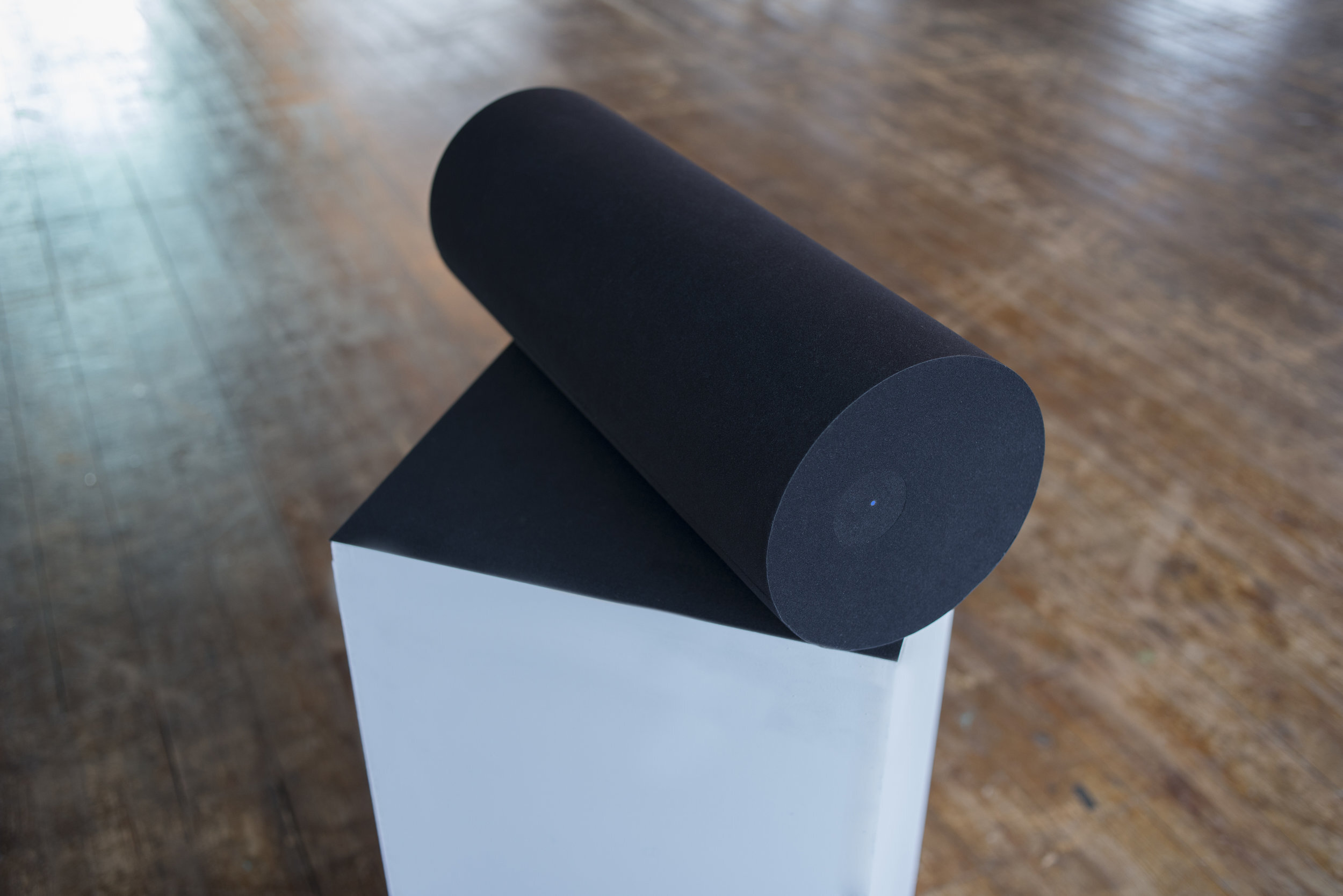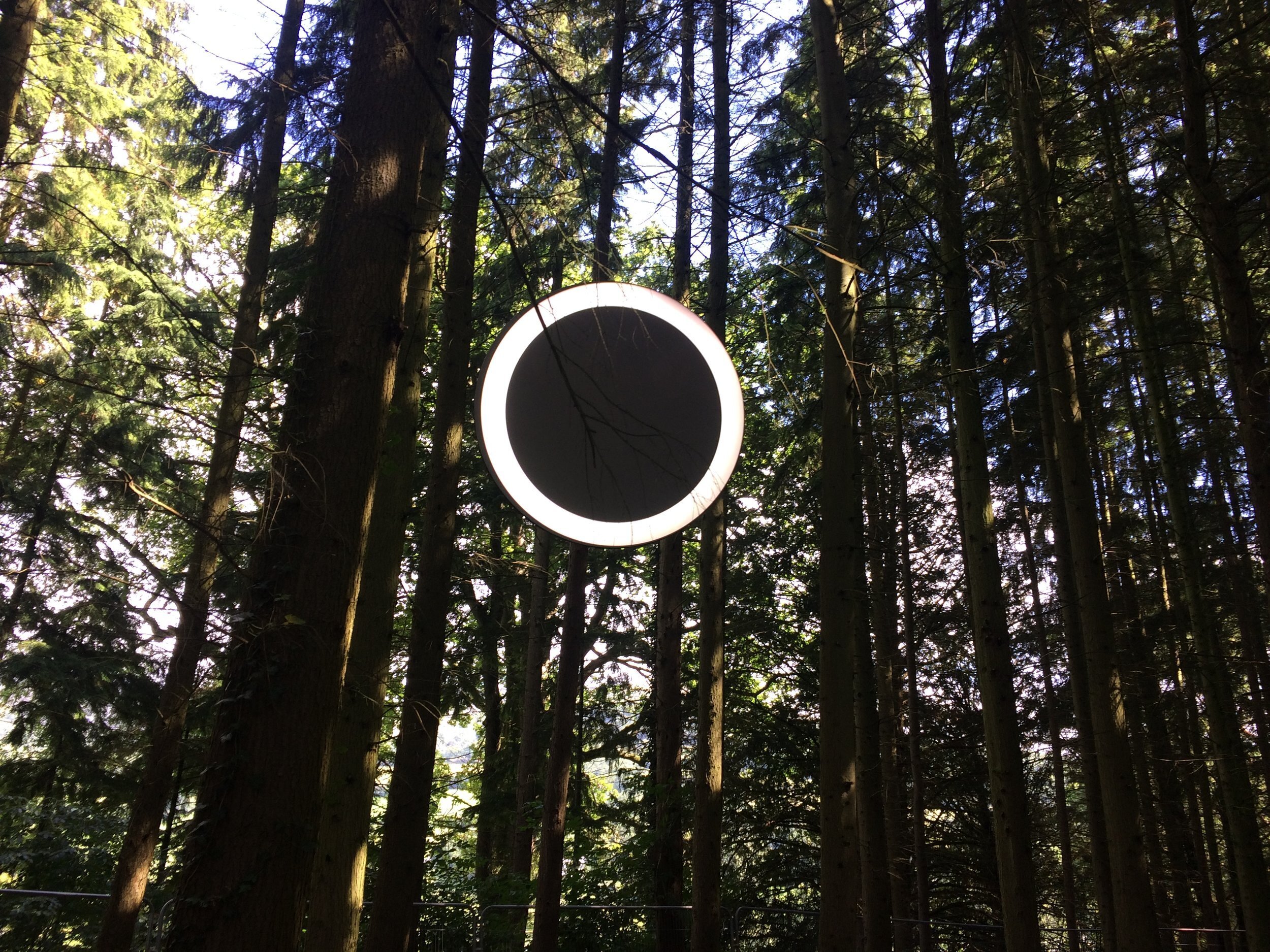Greywood Arts x National Space Centre
Pale Blue Dot Collective
The Pale Blue Dot Collective studio/ gallery at Bright Island Studio, Thanet
+ Portfolio
In Saturating Blackness
'The night sky is part of our natural heritage. It is beautiful, it is awe-inspiring and being able to see it is a way for us to connect to the wider universe and understand our place in the natural world. If we lose that it is a shame because we have lost that direct connection with something much bigger than us and something that is very beautiful.” Marek Kukula, Royal Observatory Greenwich
This piece was created using an acrylic tube and black light absorbing material. This material is used inside the barrels of telescopes to absorb stray light.
When looking through the tube, a single blue dot is suspended in the darkness. The pale blue dot takes several seconds to appear to the viewer’s eye, after searching for meaning in the sculpture.
The piece intends to highlight the significance of all of the life that exists on planet earth, with a universal perspective. Keeping the crippling damage we are inflicting on thousands of species of life forms in focus, and natural habitats that shall never be repeated, we need to change the way we view climate change. It should not only be for our benefit that we change our patterns, but for every form of life on earth. Changing for our benefit will only repeat the mistakes we have made.
Through seeing the fragility of Earth from space, I aim to show each person who views the piece how horrifying our impact is. It has taken 4 billion years of life to get to this point, on Earth. As far as we know, we are the only planet with life that has ever existed in the entire cosmos.
Under the Fading Light
It’s hard to imagine not knowing that Earth isn’t the centre of the universe, or that there aren’t other galaxies. It has taken thousands of years of knowledge building to begin to understand the size of our universe, or the amount of stars, galaxies and planets that we share it with.
Louise Beer
I grew up under an immensely starry night sky. Every time I saw the Milky Way, I was electrified inside with the ideas of the vastness of the universe, and the infinite possibilities that might exist. Under that starlight, I really felt like we were collectively looking outwards, trying to unpick the mysteries of the universe and basking in its magnificence. It was clear that I was standing on an oasis of life, looking into the uninhabitable darkness. I was part of something bigger than my immediate environment.
I moved to cities in the UK as a teenager, and have felt the change in my view as a significant loss. The images in the film contain two images, taken six months apart. The first image is from the Mackenzie Country in New Zealand, and the second image was taken in Elephant and Castle, in London.
When most people talk about seeing the Milky Way - they are referring to the ‘core’ of the Milky Way. it is not only down to air and light pollution that the view from the Northern and Southern Hemispheres are different. The central band of the Milky Way is directly overhead in the Southern Hemisphere, but in the Northern hemisphere it stays lower down towards the horizon, which makes the stars less visible. It will take roughly 125,000 years for our solar system to rotate around the centre of the Milky Way to begin to see a similar sky in the Northern Hemisphere.
I am interested in how we lose our cosmic perspective of the incomprehensible value of nature, when we lose our cosmic view. Based on observations from the Suomi NPP satellite, a third of humankind cannot see the Milky Way. We are creating ever more light pollution that disguises our view each year.
It has been suggested that the biological world is organised largely by light. The way that the Earth rotates creates a regular cycle of day and night, and it’s orbital motion and tilt of its axis causes seasonal changes. Along with local weather systems and the lunar cycle, these light conditions have been consistent for immense periods of geological time. Flora and fauna have relied on these environmental cues for ecological processes and our artificial lighting is having a devastating impact.
It is impacting migration patterns, wake-sleep habits, and habitat formation. The same light attracts and kills huge swathes of insects and disorientates birds. It is not only land based life forms that are being affected; coastal and ship lights are altering marine eco systems.
I wanted to draw a meaningful connection between each person on Earth, and the destruction of our Environment. Living in light polluted cities, it is very easy to forget to look up. It is even easier to forget that we are on a planet, that is a single, fragile, eco system.
Astronomical Images
We are lucky to still be able to see many near earth objects from our position in Margate. Looking out over the sea we have less light pollution to contend with. How long before we are locked into our own little world? We at Pale Blue Dot Collective take our view of the heavens as one of humanities greatest gifts. Without this view and the wonderment that comes with it much of humanities advances would never have happened. When Galileo turned his telescope towards the sky he unlocked a series of developments which have influenced almost all of our modern lives.
This is the comet Neowise photographed from our flat in Cliftonville in July 2020.
The Sun photographed from our home in June 2020.
The Moon photographed from our flat in April 2020.
Eclipse
Lumen
For Green Man Festival 2017, Lumen (Louise is co-founder/co-director) were commissioned to create a new work, Eclipse, which re-imagined the total solar eclipse occurring around the time of Green Man but only visible in the United States, providing a collective viewing experience under the pine trees.
Over the course of the festival, the total solar eclipse installation was a site for reflection on myths and legends surrounding the total eclipse. From the Pomo’s who believed that a bear took a bite out of the Sun, to the Tewa tribe who believed that the angry Sun went underworld in a fit of anger, to inuits who believed that the Sun and Moon were chasing each other as part of an argument.
The piece was 2m in diameter, made of MDF and plywood. The surface is hyper reflective fabric and the light used to illuminate it was a G-Spot. The piece was suspected 4m from the floor of the forest.
Images by Max Miechowski and Melanie King









